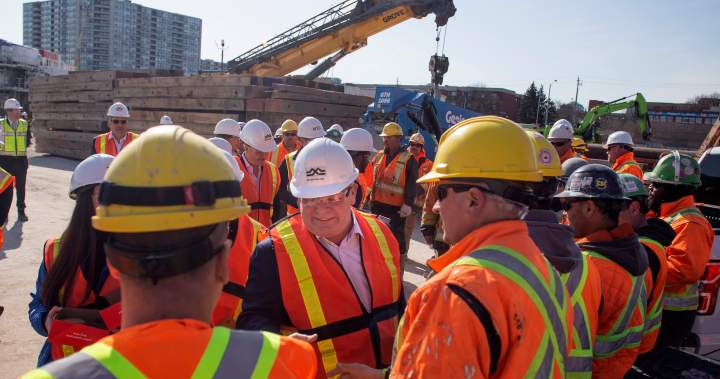The Ford government’s push to make Ontario a “manufacturing powerhouse” appears to be faltering, according to the latest data from the province’s budget watchdog, which found manufacturing activity is at its “lowest level since 2015.”

The Financial Accountability Officer’s (FAO) latest economic review found that manufacturing – which represents about 10 per cent of the province’s economy – has faced a number of challenges, including pandemic-related shutdowns, supply-chain disruptions, shipping issues, auto plant retooling, slowing demand, and, most recently U.S. tariffs on Ontario’s exports.
The result, the watchdog found, was a decline in manufacturing output in seven of the past eight quarters between mid-2023 to mid-2025, leading to 20,600 fewer jobs, representing a declining share of the province’s economy.
“Manufacturing jobs as a share of Ontario’s total employment recently fell below 10% for the first time since record keeping began in 1976,” the FAO said.
Story continues below advertisement
The report offers a sharp contrast to Premier Doug Ford’s characterization of the sector under his government, which has been heavily focused on leveraging taxpayer funds to attract new investment by offering tax credits, direct support and production incentives.
“We’ve seen $70 billion of investment from manufacturing to auto to the tech sector,” Ford recently said in the Ontario Legislature.

Get daily National news
Get the day’s top news, political, economic, and current affairs headlines, delivered to your inbox once a day.
“We have 825,000 manufacturing jobs. That’s more than Florida, which is a much bigger state, and New York, which is a bigger state, combined. We have more manufacturing jobs here,” Ford added.
More on Politics
More videos
The FAO pointed out, however, that the province’s manufacturing sector continues to erode, with “real manufacturing activity in Ontario is at its lowest level since 2015, excluding the pandemic period.”
“The decline in manufacturing real GDP has been widespread, with the largest losses in the auto industry (-18.3%), machinery (-14.8%) and primary and fabricated metal products (-9.0%),” the report stated.
A spokesperson for Economic Development and Job Creation Minister Vic Fedeli said while part of the problem lies with the U.S. trade war which has taken “direct aim at our manufacturing sector” the Progressive Conservative government has still managed to secure “tens of billions of dollars” in new manufacturing investments.
“Last month, Ontario added 55,000 new jobs, including 4,400 in the manufacturing sector. Over the last four months, we have seen the creation of 24,600 manufacturing jobs,” the minister’s office stated.
Story continues below advertisement
Data from Statistics Canada shows that while the decline in Ontario’s manufacturing sector has been steady since the turn of the century, the overall job numbers have remained flat in the 700,000 to 800,000 range.
In January 2000, when Mike Harris’s Progressive Conservative party was in government, more than a million Ontario workers were employed in the manufacturing sector.
Manufacturing employment dropped to its lowest point in January 2015, shortly after Liberal Premier Kathleen Wynne was re-elected, with 757,000 people working in the sector. Those statistics have led to accusations from the Ford government that the former government “lost 300,000 manufacturing jobs under their watch.”
The data also shows, however, that manufacturing positions have ebbed and flowed over the past decade owing to a variety of factors.
“It’s been a tariff effect, but also struggles that the sectors had,” said Deputy Financial Accountability Officer Paul Lewis who serves as the office’s chief economist. “The auto sector has been shut down for plant retooling for a number of years.”
Statistics Canada show in October 2017, during Wynne’s final year in office, Ontario had 810,600 manufacturing jobs. In October 2025, Ontario recorded 829,500 manufacturing jobs.
Still, the government said it continues to add to the jobs numbers with fresh investments from new industries looking to call the province home.
Story continues below advertisement
“Just last week, we welcomed a historic $3.2 billion manufacturing investment from Vianode to manufacture synthetic graphite in St. Thomas,” Fedeli’s office said. “Which will create up to 1,000 direct jobs.”

